If you’re in the market for a do-it-all mountain bike for big days out in the saddle, there’s a high chance you'll be best suited by a trail or cross-country mountain bike.
But what exactly is the difference between the two sub-categories? Are cross-country (XC) bikes purely for racing and can trail bikes excel uphill?
In this guide, we’ll be looking at all the key differences and intended applications of these popular mountain bikes, as well as diving into the specifics of geometry, suspension travel, frame design and more.
What’s the difference between cross-country mountain bikes and trail bikes?

The key differences between trail and cross-country bikes stem from their intended applications.
Trail bikes are mountain bikes that can tackle all but the most extreme terrain. They are designed to be versatile, fun and exciting to ride – both up and downhill. They deliver a lively and encouraging performance on graded trail-centre terrain, rolling singletrack and tamer off-piste trails.
Cross-country mountain bikes are designed to meet the demands of XC racing. These bikes are built to be as light and fast as possible, excelling on technical climbs while being capable enough to endure swooping descents and shorter highly technical sections.

Over the years, the XC Olympic (XCO) racing discipline has evolved and racecourses have become faster and more technical, with an increase of eye-catching technical features. This has led to the evolution of cross-country bikes becoming more capable, inching ever closer to bridging the gap to the territory of short-travel trail bikes.
Trail bike vs XC bike geometry
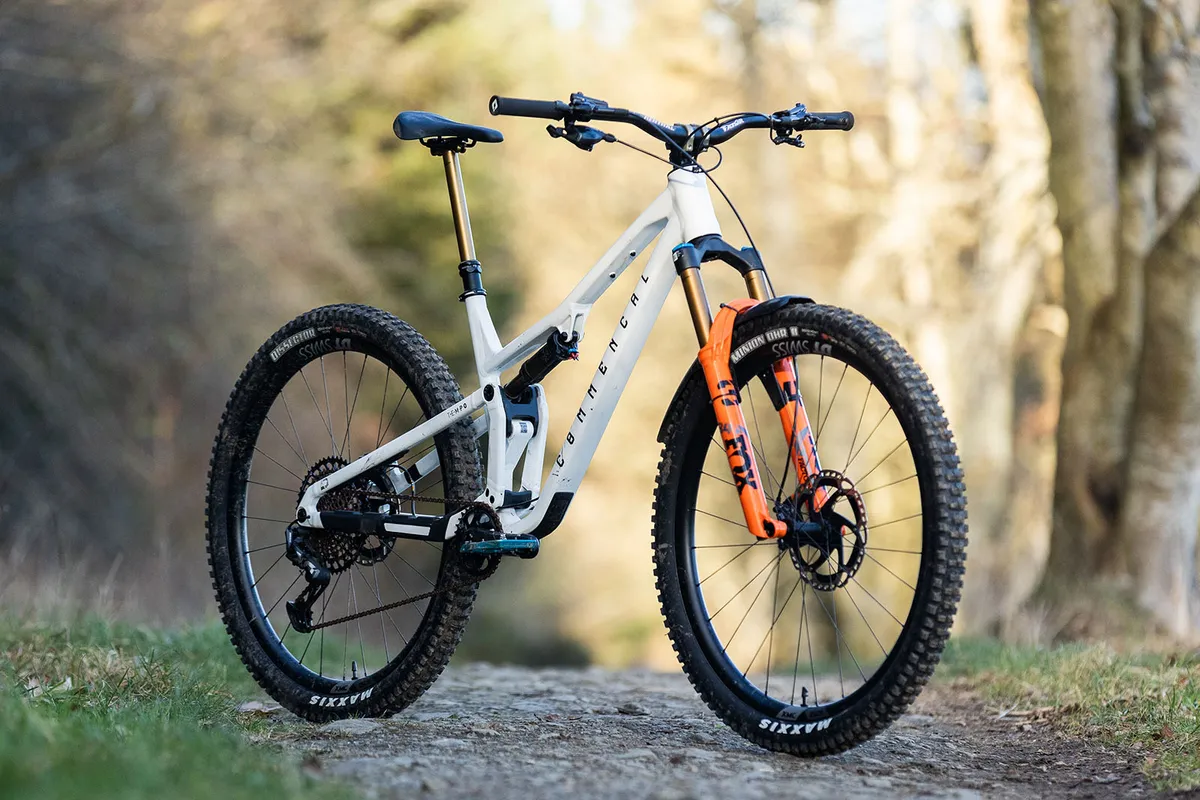
Frame geometry lies at the heart of mountain bike design, playing a key role in determining the performance characteristics of a bike.
Cross-country geometry is all about optimising speed and power by putting the rider in an aggressive pedalling position. To achieve this, XC bikes have comparatively steeper head angles (often 67 to 71 degrees) and shorter reach measurements, paired with long stems. This positions the rider’s weight over the front of the bike and allows for powerful pedalling.
Uphill manoeuvrability takes priority over descending stability and XC bikes often have a considerably shorter wheelbase than their trail counterparts.
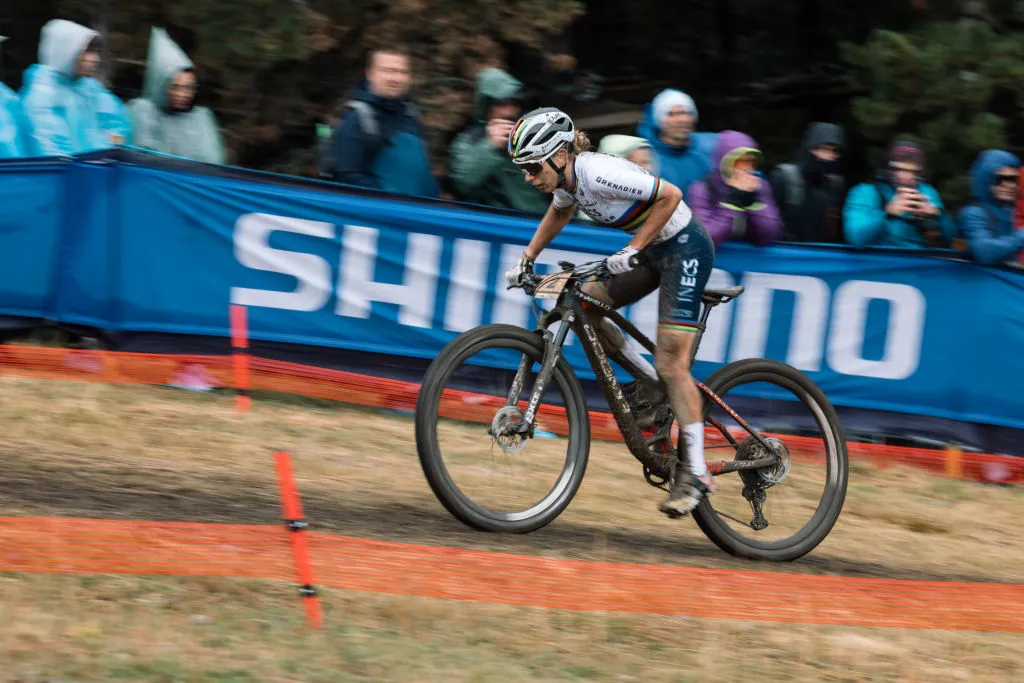
Interestingly, XC bikes often have slacker seat tube angles than other types of MTB. This might seem counterintuitive because steeper seat tubes create a great pedalling position. However, XC bikes are shorter in wheelbase by design, meaning the pedalling position doesn't need to be shifted forward to compensate.
Trail bike geometry varies greatly from bike to bike and borrows influences from the worlds of XC and enduro.
In general, trail bikes strike a balance between XC and enduro geometry, with head angles ranging from 65 to 67 degrees. They have longer reaches and wheelbases than XC bikes, which are often similar to enduro bikes, and steeper seat tube angles.
Suspension and travel

In keeping with the themes of speed, pedalling efficiency and low weight, it’s no surprise that XC bikes have comparatively short travel.
However, as cross-country race courses get progressively more technical, with jumps and bigger rocks, XC bikes are having to up their travel to keep up.
XC mountain bikes now typically have 100 to 120mm of front and rear-suspension travel, giving enough of a reserve for taming the technical sections of the course, while also keeping weight down.

Designed to be versatile, trail bikes commonly have between 130 and 160mm of suspension travel.
Short-travel trail bikes, with around 130mm travel, will appeal to riders who value climbing efficiency and descending prowess equally. They offer a ride that could be compared to a capable cross-country bike without the race-focused geometry.
At the other end of the spectrum, trail bikes with 150 to 160mm of travel are designed for maximum fun on the descents, while forgoing some of that climbing efficiency.
In the middle of the range, trail bikes with 140mm of travel are perfectly equipped for a wide variety of riding. These bikes are capable of tackling technical climbs and descents, and excelling on trail-centre terrain.
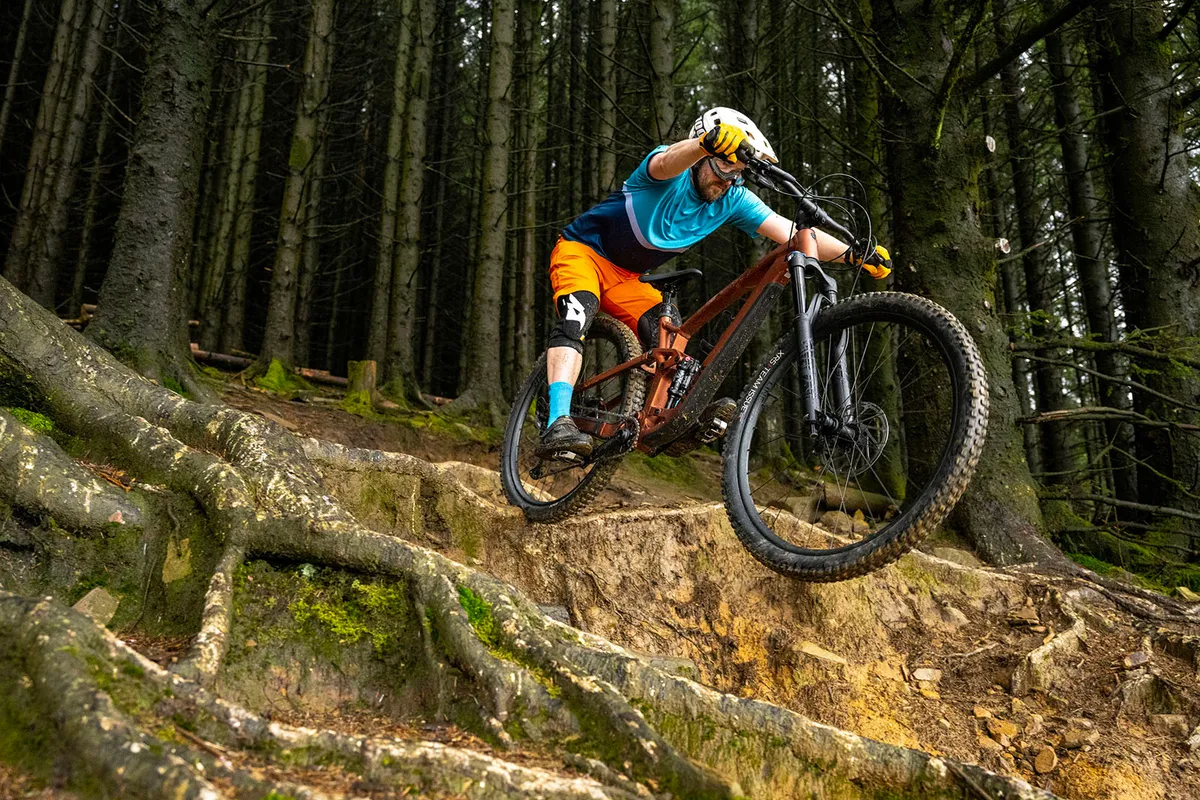
Just as important as the actual travel measurement are the suspension’s kinematics. These determine how the suspension responds to impacts in different portions of its stroke and how freely it absorbs these impacts.
Cross-country bikes are likely to have harsher-feeling suspension, where small-bump sensitivity is sacrificed for an efficient pedalling platform. Trail bikes, on the other hand, may have a subtler feel at the start of the stroke, before providing progressively more support deeper into the travel.
Another worthy caveat is that suspension travel isn’t everything. A 140mm-travel trail bike with modern geometry will likely outperform a 160mm trail bike with an outdated frame design on technical descents. Equally, a modern trail bike will likely have the edge over an older XC bike uphill.
Frame materials
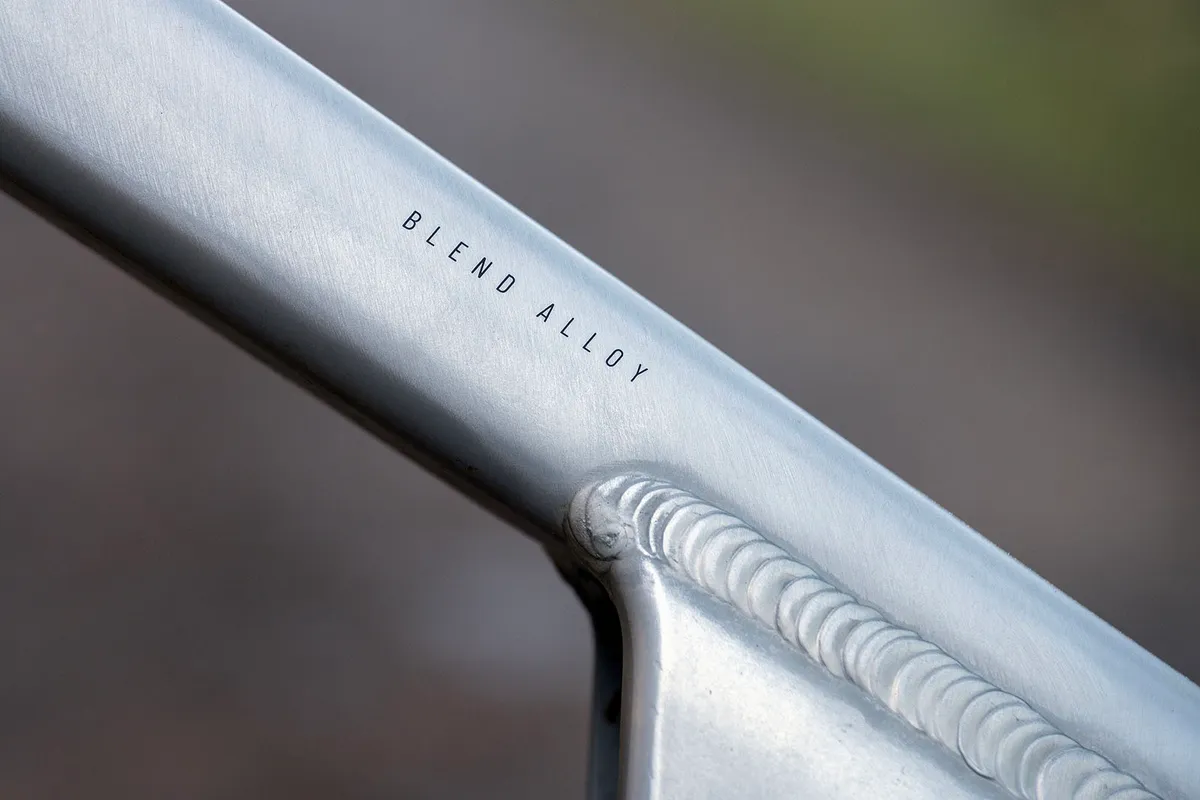
There are two common frame materials used for trail bikes – carbon and aluminium. Aluminium is prized for its durability, offering a decent strength-to-weight ratio at an affordable price. Although more expensive, carbon is a popular choice due to its lower weight and increased stiffness.
Steel is a third option, bringing a blend of strength, durability and the ability to absorb harsh vibrations from the trail, but it's a niche option and often comes with a premium price tag.
High-end cross-country bikes are almost exclusively made from carbon, due to its lightweight properties. Some more affordable models still use aluminium, however.
Due to their intended use, cross-country bike frames are noticeably lighter than trail frames. This is achieved by using thinner carbon or aluminium tubing, and minimising reinforcements around key frame areas. Because of this, cross-country bikes often don’t pass certifications for bike park/gravity riding and simply aren’t built to deal with the same loads and forces as trail bikes.
Wheel size and tyres
Wheel size
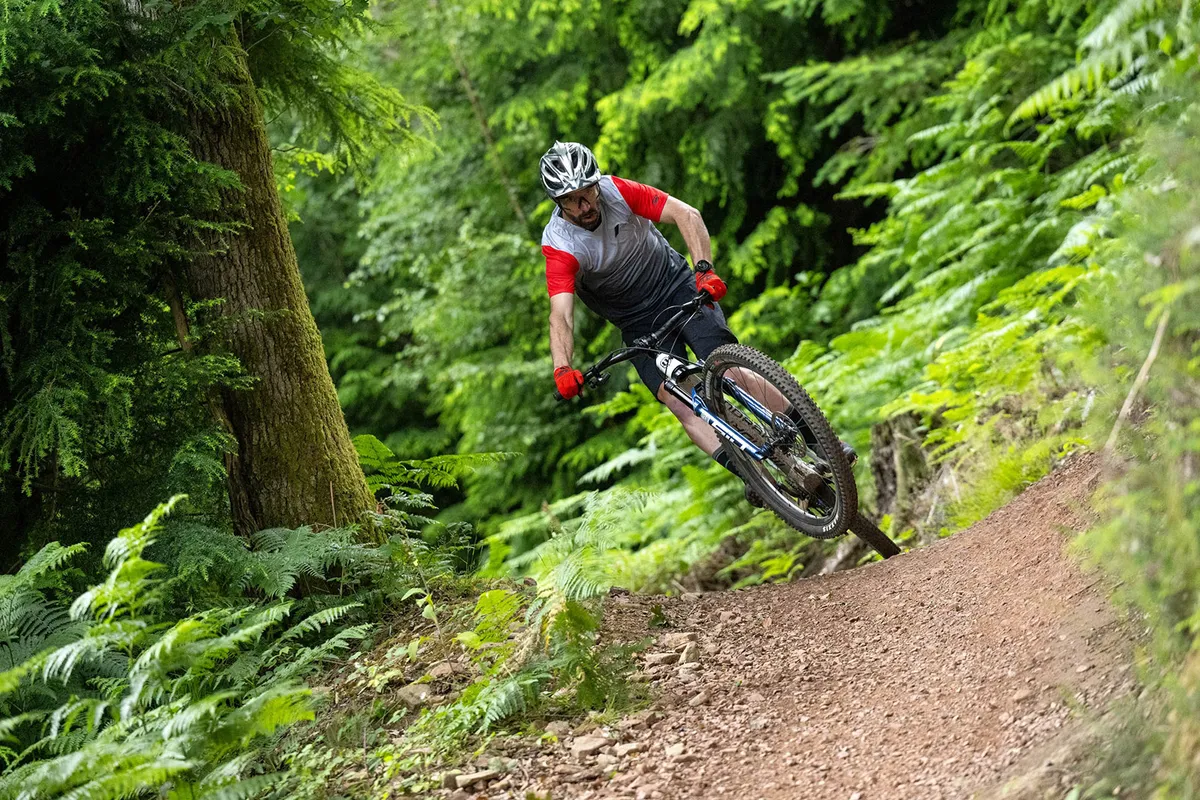
Bigger wheels are better at maintaining speed, ironing out bumps and providing maximum grip. Therefore, cross-country bikes roll on 29-inch wheels front and rear.
29-inch wheels are also hugely popular on trail bikes for the same reasons. But there’s another option.
Many modern trail bikes are compatible with mullet setups, where there is a 29-inch front wheel and a 27.5-inch rear wheel. This mixed-wheel setup blends the forgiving roll-over abilities and high grip of bigger 29-inch wheels with the snappy handling and agility of 27.5-inch wheels.
Therefore, mullet setups are particularly popular with trail riders who want a maximally playful ride and smaller riders who want the benefits of the large front wheel but require an extra bit of backside-to-rear-wheel clearance to move around on the bike.
Tyres
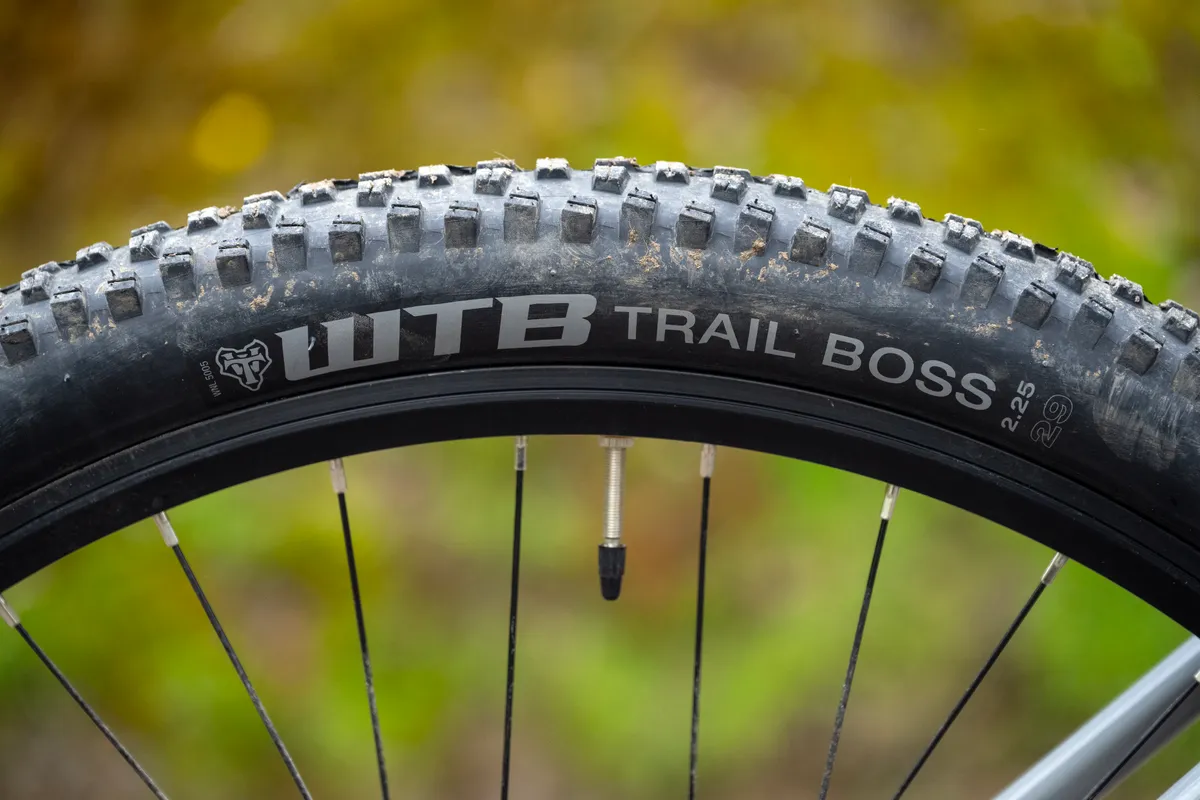
As the only contact point between the bike and the ground, a set of quality mountain bike tyres will help you get the most out of your trail or cross-country bike.
Just like the bikes they are found on, trail tyres have to find the balance between rolling speed and gravity performance.
As a result, they often rely on lighter casings than full-on enduro or downhill tyres, while often sharing soft, grippy rubber compounds with their gravity stablemates.
Most brands have a range of casings and rubber compounds available to suit every rider. For all-round trail riding, we recommend you explore the Maxxis EXO+ or Schwalbe SuperTrail range.
Cross-country tyres are designed to be as light and fast-rolling as possible, while delivering enough puncture protection and grip to get riders through technical sections with confidence.
If you don’t plan on racing your XC bike, we would recommend sacrificing some weight savings in return for a more durable casing and grippier tyre compound.
Drivetrain and gearing
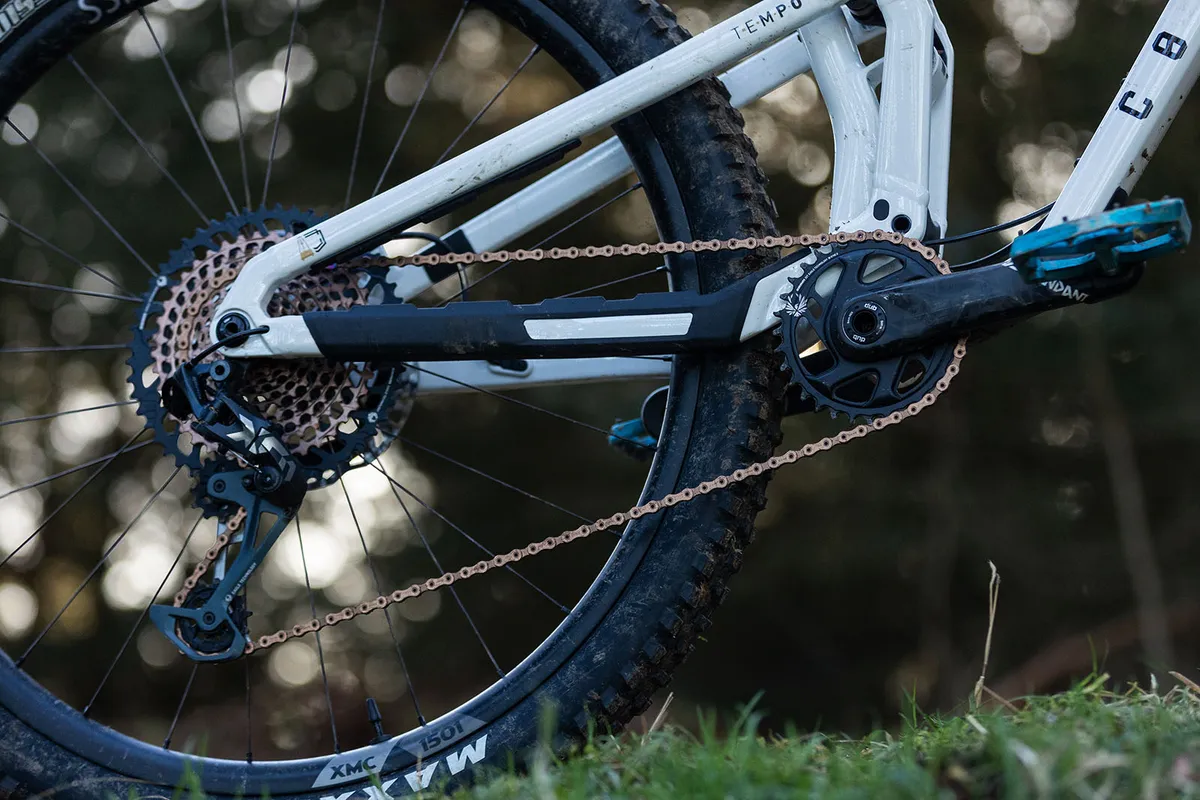
Trail and cross-country bikes benefit from the latest 1x drivetrains, which give them a wide range of gears, reliable shifting and great chain security.
While the core drivetrain technology remains the same between the two disciplines, cross-country bikes are often specced with a lighter version of the same drivetrain.
Trail bikes also commonly feature chain guides, which add an extra layer of chain security by ensuring the chain stays firmly on the narrow-wide chain ring. XC bikes commonly forego these to save weight.
Brakes

Due to the undulating nature of cross-country courses, there aren’t often many prolonged, steep descents that require really powerful brakes. Therefore, most XC bikes are specced with dual-piston hydraulic disc brakes and relatively small (160mm) rotors to save weight.
Burly trail bikes, on the other hand, commonly use powerful quad-piston hydraulic brakes and large disc rotors (180 to 200mm) to improve performance on long, steep and fast trails.
Sitting somewhere in the middle, trail bikes that are closer to the cross-country end of the spectrum may save weight with less powerful, dual-piston brakes and smaller 160 to 180mm rotors.
As with tyre choice, if you are a heavier or more aggressive rider, you will benefit from more powerful brakes and bigger rotors, regardless of whether you ride a trail or XC bike.
Dropper posts and finishing kit

It’s rare to see a modern trail bike without a dropper post. Dropper travel for trail bikes typically sits in the 125 to 170mm range, with some larger frame sizes offering even longer drops, up to 200mm or more.
Droppers are also becoming increasingly popular on cross-country bikes, often in the 100-125mm travel range. While some racers still opt for the weight savings of a fixed seatpost, we recommend any recreational rider to spec a dropper post if possible – the ability to raise and lower your seat with the touch of a button means you’ll never be caught out by a descent with your seat too high.
The finishing kit on trail and XC bikes can vary somewhat. Weight savings and pedalling position are often the reason behind the differences.
For example, trail bikes may come specced with stems in the 40 to 60mm range. While this is longer than most enduro bikes, it’s still short enough to provide stable handling at high speeds, without pulling the rider’s weight too far over the front axle.
XC stems, in comparison, measure around 60-90mm, putting the rider in a very aggressive pedalling position. Trail bikes are also likely to have slightly wider handlebars, for similar reasons.
Can you race cross-country on a trail bike?

Yes, you can race an XC event on a trail bike. While you won’t have the fastest-rolling or lightest bike on the startline, you can easily make your trail bike more XC with a few small changes.
- Stiffen your suspension slightly for improved pedalling performance
- Increase your tyre pressure by a few PSI to improve rolling speeds
- Lower your stem (if possible) to get your weight forward on steep climbs
So, should I get an XC bike or trail bike?
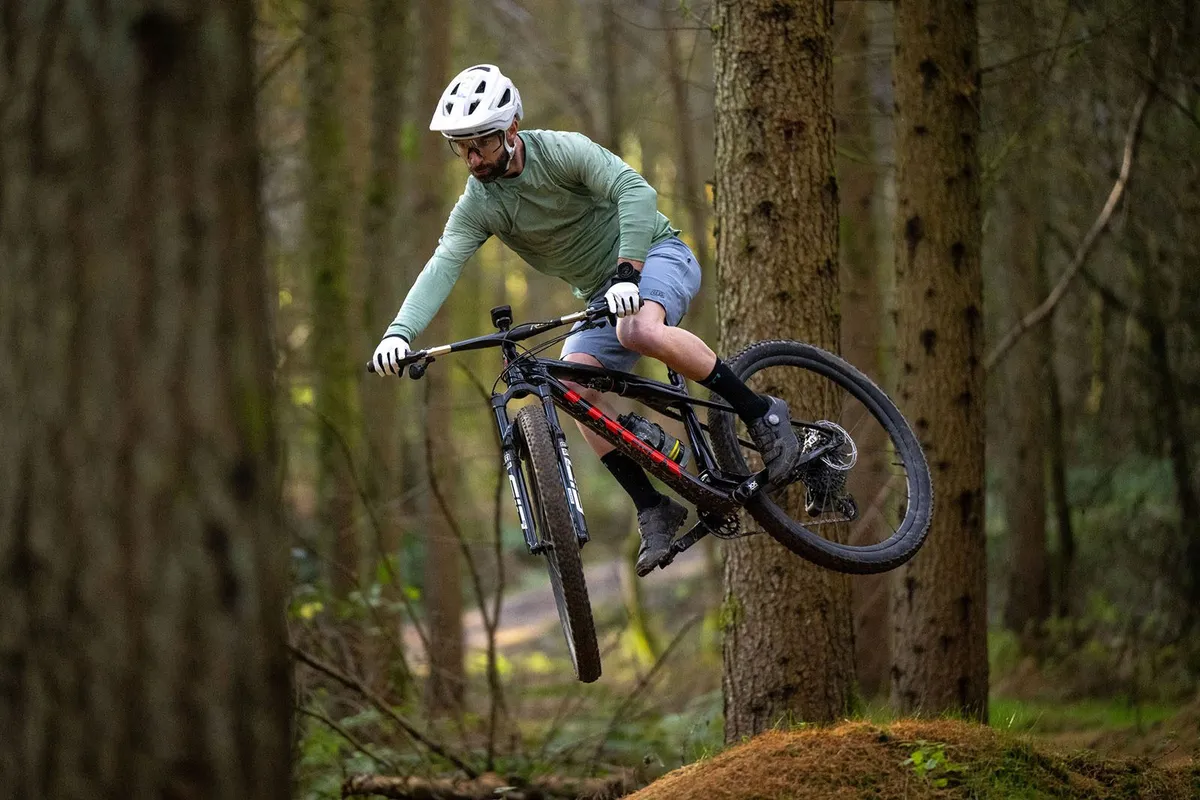
If you live for mammoth endurance rides and hot laps, or love chasing Strava times on the climbs as much as the descents, you may find yourself torn between an XC bike and a short-travel trail bike.
In that case, it’s worth considering whether you aspire to race XC, or just want to ride for the fun. If you decide to compete regularly in cross-country races, you will have more success on a dedicated cross-country bike.
If you aren’t fussed about being competitive and want a do-it-all bike that’s as much fun going up as it is down, a shorter-travel trail bike will give you a great balance of performance up and downhill, with some reserves for when the trail gets techy.
If climbing isn’t really your cup of tea, or you simply prefer jumps, berms and swooping descents, a burlier trail bike will take almost all trails in its stride and leave you wanting more.
If you still can’t decide whether a trail or cross-country bike is for you, you could also consider a downcountry bike. These often pair light XC-style frames with burly trail components.
